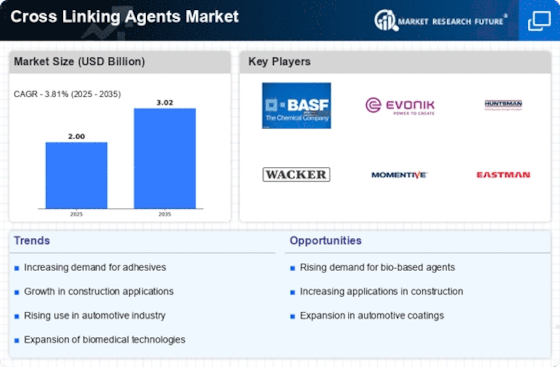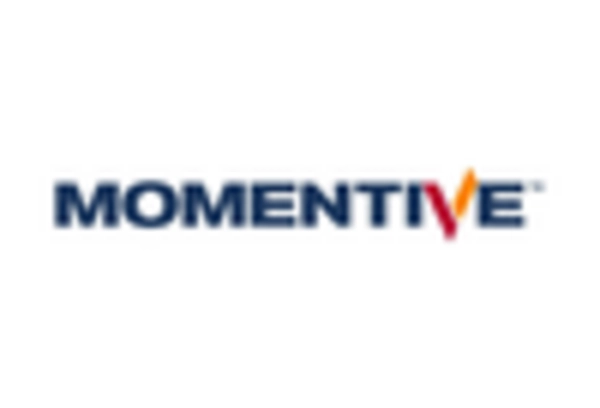Growth in the Coatings Sector
The Cross Linking Agents Market is significantly influenced by the expansion of the coatings sector, which is witnessing a shift towards high-performance and environmentally friendly products. The Cross Linking Agents is anticipated to reach around 200 billion USD by 2025, with cross linking agents being integral to the formulation of durable and resilient coatings. These agents enhance the chemical resistance and adhesion properties of coatings, making them suitable for a variety of applications, including automotive, industrial, and decorative coatings. As manufacturers increasingly prioritize sustainability and performance, the demand for innovative cross linking agents is likely to rise, further propelling the growth of the Cross Linking Agents Market.
Advancements in Polymer Technology
Technological innovations in polymer science are reshaping the Cross Linking Agents Market, as new formulations and applications emerge. The development of advanced polymers that require specific cross linking agents for optimal performance is becoming more prevalent. For instance, the introduction of bio-based polymers is gaining traction, necessitating the use of eco-friendly cross linking agents. This shift not only aligns with sustainability goals but also opens new avenues for market growth. The polymer industry is projected to grow at a CAGR of 5% through 2025, indicating a favorable environment for cross linking agents. As such, the Cross Linking Agents Market stands to benefit from these advancements, as manufacturers seek to enhance product performance and meet regulatory standards.
Regulatory Pressures and Compliance
The Cross Linking Agents Market is increasingly shaped by regulatory pressures that demand higher standards for product safety and environmental impact. Stricter regulations regarding chemical usage in various industries compel manufacturers to adopt cross linking agents that comply with these guidelines. This shift not only ensures consumer safety but also promotes the development of sustainable products. The regulatory landscape is evolving, with many regions implementing stringent measures to reduce hazardous substances. As a result, the demand for compliant cross linking agents is likely to rise, positioning the Cross Linking Agents Market favorably in a market that prioritizes safety and sustainability. Manufacturers that adapt to these regulations may gain a competitive edge.
Rising Demand in Adhesives and Sealants
The Cross Linking Agents Market experiences a notable surge in demand due to the increasing utilization of adhesives and sealants across various sectors. Industries such as construction, automotive, and packaging are driving this trend, as they seek materials that offer enhanced durability and performance. The market for adhesives is projected to reach approximately 60 billion USD by 2026, indicating a robust growth trajectory. Cross linking agents play a crucial role in improving the mechanical properties of these adhesives, thereby enhancing their effectiveness. As manufacturers strive to meet the evolving needs of consumers, the integration of advanced cross linking agents becomes essential, positioning the Cross Linking Agents Market as a pivotal player in the adhesives sector.
Increasing Applications in the Medical Field
The Cross Linking Agents Market is witnessing a burgeoning interest in the medical sector, where cross linking agents are utilized in the production of biocompatible materials. These agents are essential in the development of hydrogels, drug delivery systems, and tissue engineering scaffolds. The medical polymers market is expected to reach approximately 30 billion USD by 2025, highlighting the potential for cross linking agents in this domain. As healthcare continues to evolve, the demand for innovative materials that can improve patient outcomes is likely to drive the growth of the Cross Linking Agents Market. This trend suggests a promising future for cross linking agents as they become integral to advanced medical applications.

















Leave a Comment